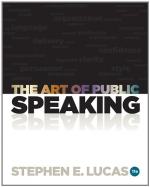Start to yawn, but instead of yawning, speak while your throat is open. Make this open-feeling habitual when speaking—we say make because it is a matter of resolution and of practise, if your vocal organs are healthy. Your tone passages may be partly closed by enlarged tonsils, adenoids, or enlarged turbinate bones of the nose. If so, a skilled physician should be consulted.
The nose is an important tone passage and should be kept open and free for perfect tones. What we call “talking through the nose” is not talking through the nose, as you can easily demonstrate by holding your nose as you talk. If you are bothered with nasal tones caused by growths or swellings in the nasal passages, a slight, painless operation will remove the obstruction. This is quite important, aside from voice, for the general health will be much lowered if the lungs are continually starved for air.
The final fundamental requisite for good voice is
3. Forwardness
A voice that is pitched back in the throat is dark, sombre, and unattractive. The tone must be pitched forward, but do not force it forward. You will recall that our first principle was ease. Think the tone forward and out. Believe it is going forward, and allow it to flow easily. You can tell whether you are placing your tone forward or not by inhaling a deep breath and singing ah with the mouth wide open, trying to feel the little delicate sound waves strike the bony arch of the mouth just above the front teeth. The sensation is so slight that you will probably not be able to detect it at once, but persevere in your practise, always thinking the tone forward, and you will be rewarded by feeling your voice strike the roof of your mouth. A correct forward-placing of the tone will do away with the dark, throaty tones that are so unpleasant, inefficient, and harmful to the throat.
Close the lips, humming ng, im, or an. Think the tone forward. Do you feel it strike the lips?
Hold the palm of your hand in front of your face and say vigorously crash, dash, whirl, buzz. Can you feel the forward tones strike against your hand? Practise until you can. Remember, the only way to get your voice forward is to put it forward.
How to Develop the Carrying Power of the Voice
It is not necessary to speak loudly in order to be heard at a distance. It is necessary only to speak correctly. Edith Wynne Matthison’s voice will carry in a whisper throughout a large theater. A paper rustling on the stage of a large auditorium can be heard distinctly in the furthermost seat in the gallery. If you will only use your voice correctly, you will not have much difficulty in being heard. Of course it is always well to address your speech to your furthest auditors; if they get it, those nearer will have no trouble, but aside from this obvious suggestion, you must observe these laws of voice production:




